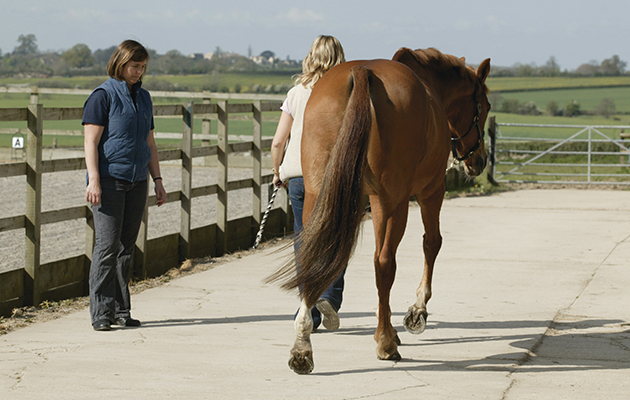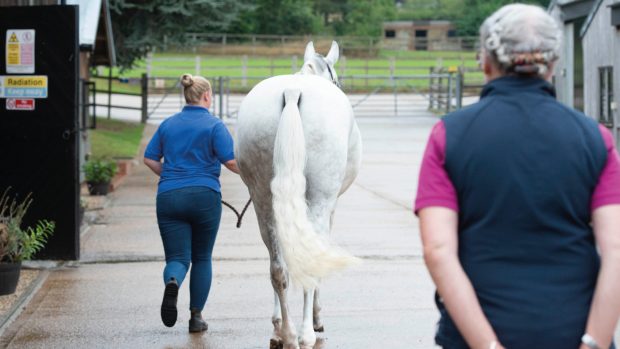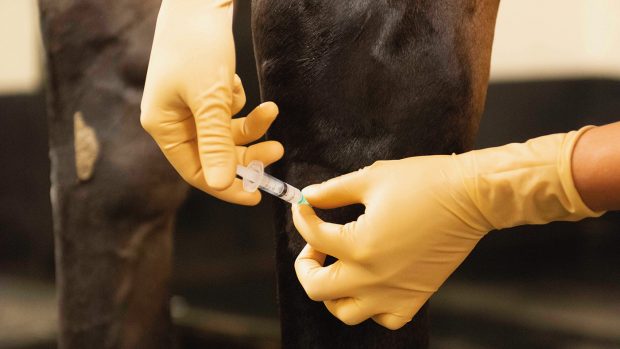A project to develop a guide to help owners, trainers and vets identify lameness through a horse’s behaviour and facial expressions has successfully completed its third stage.
Led by Sue Dyson, head of clinical orthopaedics at the Animal Health Trust (AHT), the first and second stages of the study have already successfully demonstrated that a horse’s facial expressions are a reliable indicator of pain.
The project’s third stage looked at which behaviours could be consistently linked to lameness – with a view to creating a method for assessing a horse as a whole.
In all, 24 behavioural markers were identified, including head tossing, unwillingness to go forwards, hurrying, toe dragging, crookedness, changing gaits spontaneously and stumbling.
The presence of eight or more of these markers was found to be a likely indicator of musculoskeletal pain. Lame horses displayed an average of nine of these behaviours, while non-lame horses averaged just two.
The final stage of the study will assess how well the ethogram [table of behaviours] works in differentiating lame and sound horses. Once the final ethogram is complete and has met with scientific approval, a functional guide for owners will be produced.
The study evolved from Sue’s extensive clinical work, where she recognised that poor performance was often labelled as “naughty” behaviour. Often, when the problems were finally identified as pain-related and the horse referred for investigation, injuries had become chronic and the opportunity for recovery was compromised.
It’s hoped that by being able to detect pain with a visual guide, owners and trainers will be more likely to take a sympathetic approach to problem behaviour, rather than resort to punishment.
Continued below…

Riders struggling to spot lameness *H&H VIP*
Almost half of "sound" sport horses in a study were found to be lame

Half of all sport horses are lame, survey finds
A new study shows that nearly half of all sport horses that were assessed were found to be lame or
Sue is currently marking 35 years with the AHT, where she treats hundreds of patients each year in the clinic alongside her ongoing research.
“Our clinical cases are integral to our research. Without them and the willingness of their owners to contribute their data to our research projects, we would not be able to advance veterinary techniques as comprehensively as we do now,” she said.
“At the AHT we have developed a cycle, whereby our clinical patients feed into our research, and in turn our research results are fed back into the industry to develop veterinary and owner knowledge to support the care of horses worldwide.
“I have always had a thirst for new knowledge and quickly learnt that by documenting my clinical observations, certain patterns emerged which could be translated into recognising new conditions. I didn’t think of this as research – just learning on the job. There are many unanswered questions when it comes to horses, and the learning process proceeds endlessly – and excitingly!”




